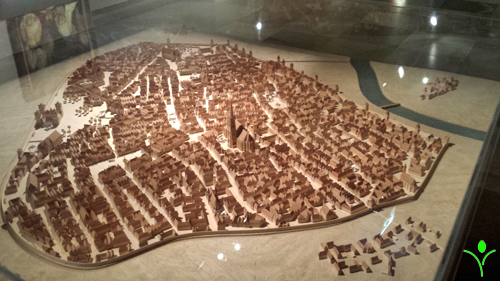Vienna is a place full of art and history… but how many of us, do really know something about Vienna history?
Are you in vacation, and eager to learn a new language? Then Deutsch Akademie is the place you are looking for. Situated right in the heart of Vienna, before or after the classes, you can visit all the touristic attractions which are very close by.
Or are you staying abroad but you are fascinated of Vienna…Did you knew that Deutsch Akademie offers German classes with accommodation? Well, they are thinking at all those people who are willing to learn German in a German speaking city, but they are not willing to relocate. So, they do all the job with the accommodation. All you have to do, is to attend the classes and Learn German 😀.
But my next posts are not about classes or accommodation, and are not only for the people which are new or just visiting Vienna. It is also for the ones which are leaving here for a couple of days, months or years… Will be about history… How much history of Vienna do you know? Did you knew that St. Stephan’s Cathedral started in 1137, or that Napoleon stayed in Schönbrunn Palace for a short period?
I will make a short history incursion in time, in which I will underline the most important periods of Vienna development from my point of view.
- Vienna in the middle ages
Medieval Viennese people lived from trade and wine making. Around 800, Vienna was still a small Carolingian border town. It would gain importance in the twelfth century, however, when the Babenbergs took up residence there (1155) and construction began on St. Stephen’s Cathedral (1137).
The city walls were erected around 1200. At this time, Vienna enjoyed a large degree of autonomy, reflected in the self-government of its citizens, as well as their special municipal and trading rights, which allowed for a trading monopoly in Hungary. The city maintained this independence even during the period of Bohemian rule from 1251 to 1276 and, from 1278 onward, under the Habsburgs. Next to Cologne, Vienna was considered the most important city in the Holy Roman Empire.
In the Late Middle Ages, the Habsburg court became a cultural hub of central Europe, attracting numerous artists. The found of the university in 1365 and Vienna’s elevation to a diocese in 1469 further increased the city’s importance. Outside the city walls, as well, the suburbs were constantly expanding.
In the fifteenth century, political and economic crises – the massacre and expulsion of the Jews in 1421, the Hussite Wars, the shift of the economic centers of Venice and Byzantium to Germany and Flanders – led to a period of stagnation. At the end of the Middle Ages, Vienna fell for a short time under Hungarian rule.
See you tomorrow for the next chapter from History of Vienna! 😀

